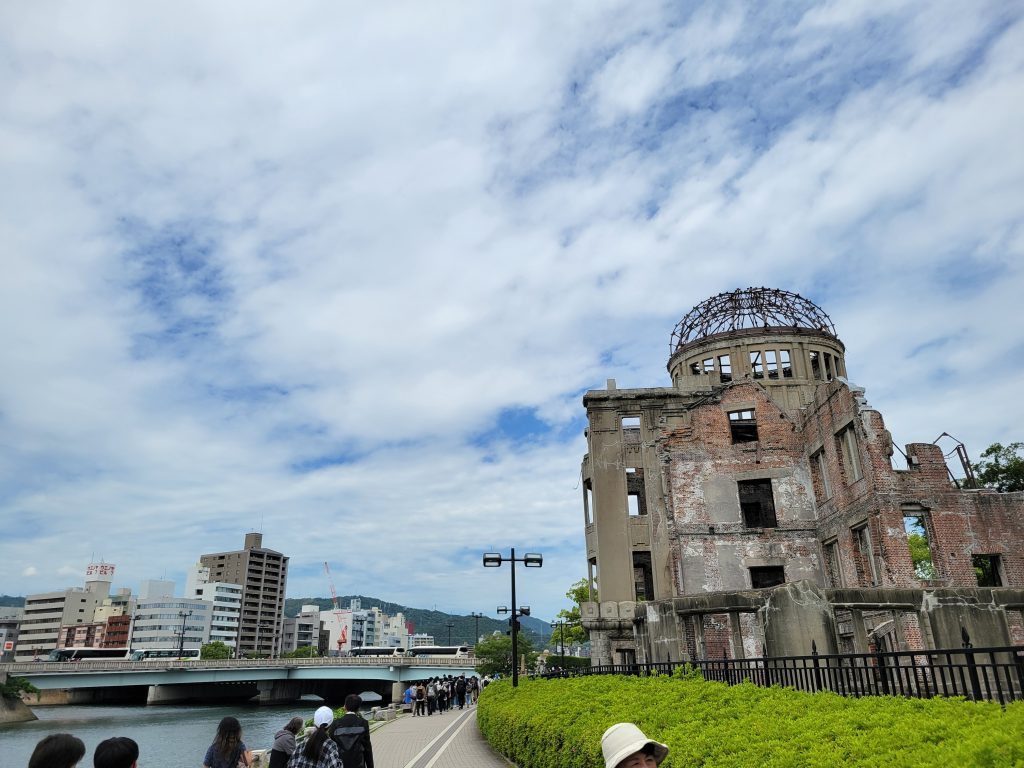
A-Bomb Dome in Hiroshima Peace Memorial Park
Today we went to Hiroshima to visit the Peace Memorial Park and Museum. It was a really emotionally taxing day, but I think it was a really important thing to experience. We started the day by taking the Shinkansen to Hiroshima station and then bussing over to the A-Bomb Dome. This structure was almost directly below the bomb dropped on Hiroshima but it remained mostly intact. The structure was kept intact and not demolished due to people finding a little girl’s diary speaking on how important the building is.
After we were done looking at the A-Bomb Dome we walked across a nearby bridge to the rest of Peace Memorial Park. Here there was a flower bed filled with plants and trees donated by other countries, there were none from the United States. Next to the flower bed was a memorial to the children who were killed by the bomb. It depicted paper cranes and children flying around a bell. There were other small things scattered throughout, like a stone donated from Scotlands highest mountain. All of the trees in the park were donated by other countries, which was really interesting. The park itself is meant to symbolize peace and cooperation throughout the world, so the fact that so many countries and regions contributed to both its existence and preservation was really great.
After walking around the park and not letting Sten take a group photo next to the dead children memorial, we went to the Peace Memorial Museum. The museum was fascinated and also heart wrenching. The first floor had lots of information and artifacts on the foster children of the bombing. It also had a clock that counts the number of days since Hiroshima was bombed and since the most recent nuclear test happened. The latter was far too low, sitting at ~650 when I saw it. The clock also had gears that connect each other and are spun by a single gear at the top, which will have its speed increase whenever the earth is in danger. If the gear at the bottom of the clock is ever moved, the clock will self-destruct. This symbolizes that the earth is beyond saving and humanity has gone past the point of no return. The floors above the first showed all sorts of artifacts from survivors and victims of the bomb. There were sections on school chilren who died, parents who lost their children, fostered children, those who died from after-affects of the bomb, and what it was like when the bomb went off. After walking through all of those ‘exhibits’, we arrived at a large room that overlooked the first floor. This room contained a table that you could learn all sorts of information at. From how the city was rebuilt to how the atomic bomb was built. There was also information on the walls of this room that explained this information in greater detail. Overall the day was very difficult to get through emotionally, but it was a really important thing to do in my opinion.
Comments are closed